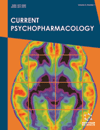
Full text loading...
We use cookies to track usage and preferences.I Understand
Tardive dyskinesia (TD) is induced by antipsychotic drugs that have dopamine-antagonising properties. It frequently causes physical and mental anguish in individuals, lowering their quality of life. Recent research on the aetiology and pathogenesis of TD indicates that genetic predisposition, treatment options, age, sex, and lifestyle factors are among the key risk factors contributing to the development of TD. Various genetic polymorphisms along with severe oxidative stress and other diseased conditions help to precipitate TD while on antipsychotic medications or other dopamine receptor blockers. Individuals diagnosed with schizophrenia are at a higher likelihood of developing TD. The current piece of literature aims to review the probable underlying mechanisms of TD, explore its pathophysiology, address the diagnostic challenges, and present the available treatment options. This comprehensive analysis draws from a range of published peer-reviewed publications, presenting the information in a clear and accessible manner.

Article metrics loading...

Full text loading...
References


Data & Media loading...

